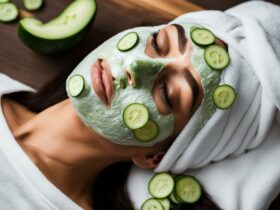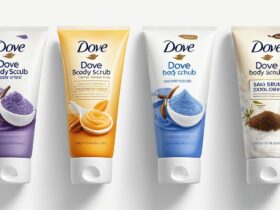Are you tired of spending a fortune on store-bought serums that promise miraculous results but fail to deliver? If you want to take control of your skincare routine and ensure that your skin gets the nourishment it deserves, why not create your own custom serum using easy DIY recipes? In this article, napac delve into the world of serums, explore key ingredients, and guide you through the process of making your personalized skincare elixir. Let’s get started!
Understanding Serums and Their Benefits
Before we dive into the world of DIY serums, it’s essential to understand what a serum is and why it has gained popularity in the skincare community.
What is a Serum?
A serum is a lightweight, fast-absorbing skincare product that contains a high concentration of active ingredients. Unlike creams or lotions, serums penetrate deeper into the skin, targeting specific concerns such as wrinkles, fine lines, dark spots, and dullness.
Why Use Serums?
Serums offer a myriad of benefits, making them an indispensable part of any skincare routine. Some advantages of using serums include:
- Boosting collagen production for firmer skin
- Brightening and evening out the skin tone
- Hydrating and plumping the skin
- Providing antioxidants to combat free radical damage
Key Ingredients for DIY Serums
When creating your DIY serum, selecting the right ingredients is crucial to achieving your desired results. Let’s explore some key components commonly used in DIY serums.
Vitamin C
Vitamin C is a powerful antioxidant that aids in collagen synthesis, promoting a youthful complexion. It helps fade dark spots, protects against sun damage, and brightens the skin.
Hyaluronic Acid
Hyaluronic Acid is renowned for its excellent hydrating properties. It locks in moisture, making the skin appear plump and supple while reducing the appearance of fine lines.
Retinol
Retinol, a form of Vitamin A, is a go-to ingredient for combating signs of aging. It stimulates cell turnover, reduces wrinkles, and improves skin texture.
Aloe Vera
Aloe Vera is a soothing ingredient that calms irritated skin and reduces inflammation. It is perfect for sensitive skin types.
Essential Oils
Essential oils like lavender, tea tree, and rosehip add a therapeutic element to DIY serums. They offer additional benefits such as acne-fighting properties and aromatherapy.
Safety Precautions and Patch Testing
Before concocting your DIY serum, it’s essential to take safety precautions seriously. Proper patch testing and dilution ratios can prevent adverse reactions.
Patch Testing
Always perform a patch test before applying the serum to your face. Apply a small amount on your forearm and wait for 24 hours to check for any allergic reactions.
Safe Dilution Ratios
Some ingredients like essential oils require proper dilution to avoid skin irritation. Always follow recommended dilution ratios to ensure the safety of your DIY serum.
Allergies and Sensitivities
Be mindful of your allergies or skin sensitivities when selecting ingredients for your serum. If you have a history of allergies, consult with a dermatologist before proceeding.
Easy DIY Serum Recipes
Now that you understand the essential ingredients and safety measures, let’s explore some simple yet effective DIY serum recipes that you can create at home.
Hydrating Vitamin C Serum
Ingredients:
- 1 teaspoon of Vitamin C powder
- 1 tablespoon of distilled water
- 1 teaspoon of glycerin
- 2 teaspoons of aloe vera gel
Instructions:
- In a small bowl, mix the Vitamin C powder and distilled water until fully dissolved.
- Add the glycerin and aloe vera gel to the mixture and stir well.
- Transfer the serum to a dark-colored dropper bottle for storage.
Application:
Apply a few drops of the serum on clean, damp skin in the morning before moisturizing.
Nourishing Hyaluronic Acid Serum
Ingredients:
- 1 tablespoon of hyaluronic acid powder
- 2 tablespoons of distilled water
- 1 tablespoon of rose water
- 2-3 drops of your favorite essential oil (optional)
Instructions:
- In a clean container, combine the hyaluronic acid powder and distilled water.
- Add the rose water and essential oil (if using) and mix well until the powder is fully dissolved.
- Pour the serum into a dropper bottle for easy application.
Application:
Apply a few drops of the serum on cleansed skin, both morning and night.
Rejuvenating Retinol Serum
Ingredients:
- 1 teaspoon of retinol powder
- 2 tablespoons of rosehip seed oil
- 1 tablespoon of jojoba oil
- 2-3 drops of lavender essential oil
Instructions:
- Mix the retinol powder with rosehip seed oil in a dark-colored container.
- Add jojoba oil and lavender essential oil to the mixture, stirring well.
- Store the serum in a dropper bottle, away from direct sunlight.
Application:
Use this serum at night after cleansing and before moisturizing.
Soothing Aloe Vera Serum
Ingredients:
- 2 tablespoons of fresh aloe vera gel
- 1 tablespoon of cucumber juice
- 1 teaspoon of chamomile oil
Instructions:
- Combine the fresh aloe vera gel and cucumber juice in a blender until smooth.
- Add the chamomile oil and blend again.
- Transfer the serum to a sterilized container for storage.
Application:
Apply a small amount of the serum to clean skin, morning and evening.
Balancing Essential Oil Serum
Ingredients:
- 1 tablespoon of argan oil
- 1 tablespoon of jojoba oil
- 2-3 drops of tea tree essential oil
- 2-3 drops of geranium essential oil
Instructions:
- Mix the argan oil and jojoba oil in a glass container.
- Add the tea tree and geranium essential oils, giving it a good mix.
- Store the serum in a dropper bottle, away from direct sunlight.
Application:
Use this serum in the evening after cleansing and before applying a moisturizer.
How to Customize Your Serum
The beauty of DIY serums lies in the ability to customize them according to your specific skin needs.
Skin Type Assessment
Determine your skin type (normal, oily, dry, combination) to choose the right base for your serum. For instance, those with dry skin can opt for more hydrating ingredients, while those with oily skin can incorporate ingredients that balance sebum production.
Custom Ingredient Combinations
Experiment with different ingredients to find the perfect blend that addresses your skincare concerns. You can adjust the concentration of active ingredients to suit your skin’s tolerance levels.
Application and Storage
To get the most out of your DIY serum, proper application and storage are crucial.
Proper Application Techniques
Apply the serum to clean, slightly damp skin using gentle, upward strokes. This ensures better absorption and maximizes the benefits of the active ingredients.
Storing Your DIY Serum
Store your homemade serum in dark-colored glass bottles with a dropper or pump dispenser. Keep it away from direct sunlight and extreme temperatures to maintain its efficacy.
Conclusion
Creating your own custom serum is a rewarding and empowering experience. By understanding the key ingredients, following safety precautions, and customizing the formulation, you can tailor the serum to meet your specific skincare needs. Embrace the DIY approach and say hello to healthier, glowing skin.
FAQs
Can I use these DIY serums every day?
Yes, you can use these serums daily, but start with once a day and observe how your skin responds. Adjust the frequency based on your skin’s tolerance.
Are DIY serums as effective as store-bought ones?
Absolutely! DIY serums can be equally effective, if not more, as they allow you to use high-quality, potent ingredients in the concentrations you desire.
Can I mix different serums together?
While it’s best to use each serum separately to reap its full benefits, you can layer them if needed. Just ensure that the combination is suitable for your skin type.
How long can I store these DIY serums?
Since DIY serums lack preservatives, it’s best to use them within 1 to 3 months. Discard if you notice any changes in color, smell, or texture.
Are there any side effects of DIY serums?
When using new ingredients, always perform a patch test to check for any adverse reactions. Discontinue use if you experience irritation or discomfort.





